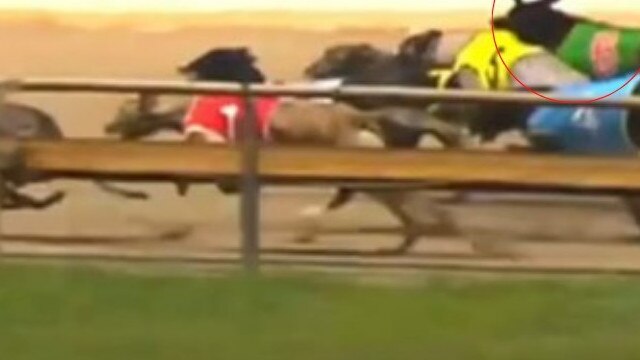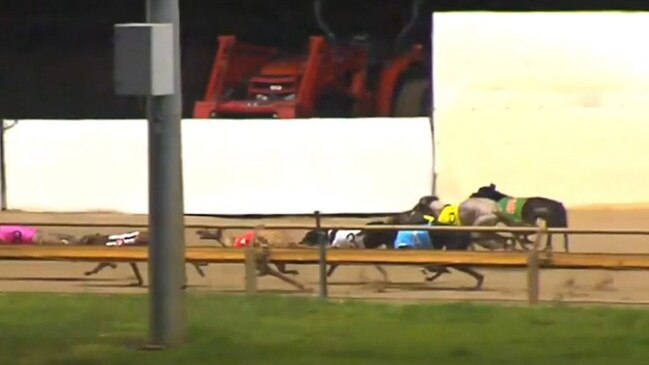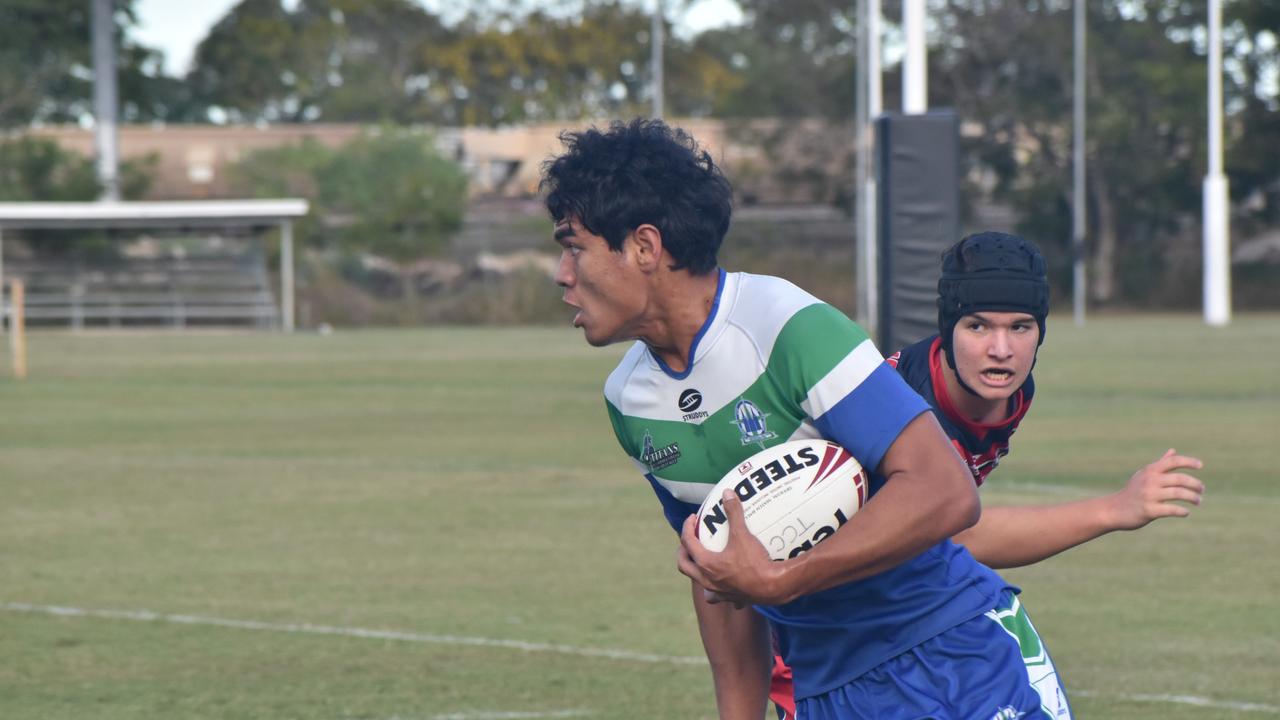Greyhound death on Rockhampton racetrack sparks debate
The death of a greyhound following a neck-breaking crash at a Qld meet has attracted the furore of anti-racing advocates, but industry chiefs insist it was a “freak” accident on “one of the best tracks” in the state. *Distressing content.

Sport
Don't miss out on the headlines from Sport. Followed categories will be added to My News.
*Warning – the content of this article may be distressing for some readers. Discretion is advised.
A greyhound racing official today rejected claims the Rockhampton track was too dangerous after a young dog broke its neck in a “horrific” crash during its very first race.
Rockhampton Greyhound Racing Club treasurer Dallas Beckett said Racing Queensland had “spent a fortune” on upgrading the track and the death of 23-month old Kashiwagi on October 2 was simply a “freak” accident.
He was responding to claims by the Coalition for the Protection of Greyhounds that Kashiwagi broke its neck after it was obstructed at the first turn and crashed into the outer fence of the track.
The group in a statement said since “several so-called safety upgrades costing $757,000, the Rockhampton track has seen eight on-track racing deaths and 632 injuries since 2020”.
Annie Hendley, Queensland Director of the Coalition for the Protection of Greyhounds, said 13 greyhounds had died racing on Queensland racetracks in 2024, according to stewards’ reports.
She said the Rockhampton track carried an unacceptable fatality rate.
“Queensland is known as the killing state for greyhounds,” she said.
“As well as dying on dangerous racetracks, we believe the industry has tried to solve its rehoming crisis by killing greyhounds for spurious reasons.”
“There needs to be a parliamentary inquiry into greyhound racing.”
In the video of the weekend Rockhampton race, which has been viewed by this publication but not shared in this article due to the distressing nature, the dog can be seen separating from the back of the pack and collapsing on the track before attempting to get up and falling again.
Mr Beckett had a dog in Kashiwagi’s race and he believes it broke its neck when clipping the heels of another dog, falling heavily and hitting its chin on the track.

He believes that’s when the serious injury occurred, not in any following contact with the fence.
“That (accident) was devastating,” he said.
“But it was a freak accident. I have never seen a dog break its neck at a track.”
“I saw the trainer go around and collect the dog straight away. She comforted it as much as possible and took it to the (on-track) vet who checked it and put it down straight away.
He said the 632 Rockhampton injuries listed by the group were mostly minor and ranged from mild problems such as a sprained toe.
“These people (the advocacy group) have an agenda (to shut down greyhound racing),” he said.
“We might (only) get five or six serious injuries a year.”
The Coalition for the Protection of Greyhounds said Kashiwagi was the second racing death at Rockhampton this year, compared to one in 2023.
It said analysis of racing industry databases showed the deaths of 14 other greyhounds in the Rockhampton area in 2024.
Of these 14, nine were euthanised for supposedly not being rehomable, and five euthanised due to “injury”.
Mr Beckett said he was “baffled by accusations” that the track was too dangerous.
He said the Rockhampton track was now one of the “best in Queensland”.
“We had the whole track resurfaced six months ago and rebedded and cambered to make sure the animals drift apart more than together as they go around bends,” he said.
As a precautionary measure the club is now going to pad the fencing in the area where Kashiwagi fell.
A Racing Queensland spokesperson said statistics proved most dog injuries from races were minor in nature.
“Approximately 3% of starters across all Queensland greyhound tracks incur injury, with the vast majority of those able to return to racing inside a fortnight,” he said.
“The adoption of the Race Meeting Injury Scheme, along with QRIC’s enhanced protocols around the treatment of on-course injuries, supports the industry’s commitment to placing animal welfare at the core of its day-to-day activities.”
He said since launching the scheme, euthanasia rates had reduced by more than 70%, with the policy designed to remove any barriers that may exist for Queensland owners to rehabilitate their greyhounds.
A Queensland Racing Integrity Commission (QRIC) spokesperson said Racing Queensland began rolling out significant new laws to better protect greyhounds regarding rehoming, euthanasia and abandonment from September 1.
The changes to the Rules of Racing mean owners must rehome greyhounds that have been retired from racing or breeding, unless they are being retained as pets.
Euthanasia may now only be permitted in limited circumstances, such as on humane or medical grounds following a veterinarian’s recommendation, or on behavioural grounds if the greyhound has been temperament assessed and certified as unsuitable for rehoming by a veterinarian.
The spokesperson also said QRIC was continually exploring and adopting new strategies to reduce the injury and euthanasia of greyhounds racing at all Queensland race meetings.
Racing Queensland said it supported these strategies.
The spokesperson said this included analysis of injury data and research into risk factors; improved track curator education and standardisation across track maintenance, preparation methods and equipment.




